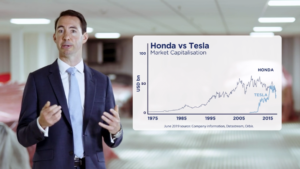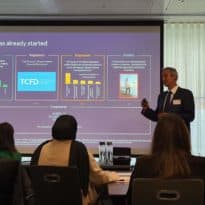Ben Preston, manager of the Orbis Global Equity fund, looks to the future and says as an investor he is not following the electric vehicles trend, as yet
When you look at electric car chargers, it feels like looking into the future. A world of zero emissions and clean energy, where the combustion engine is a thing of the past.
Electric cars are fuel-efficient, come with low maintenance costs and are fun to drive. But they are expensive. And, to put it in perspective, last year only 2% of the cars sold globally were electric. In most parts of the world the charging infrastructure doesn’t exist.
Getting the balance right
When you look at a share price chart, it’s easy to see Honda, an old company being overtaken by Tesla, the futuristic new kid in town.
But, just because a company is growing today, doesn’t necessarily mean it’s going to be a good investment over time. Just like choosing the right car, choosing an investment is a balance between what you pay and what you get in return.
And so while Honda and Tesla have similar stock market valuations today, you get about 6 or 7 times more revenue for your money buying Honda than you do from Tesla.
The search for asymmetry
As an investor, my job is to look beyond the hype and really try to figure out what a company is truly worth.
A key part of that is to recognise that the current market price is really just one of a range of possible outcomes for the future.
To keep things really simple, let’s just think about two – the bear case if things go badly and the bull case if things go really well.
Now, most of the time you might expect the share price to trade roughly in the middle of that range. But, sometimes investors get so optimistic that they price in a very rosy view of the future.
The problem with that is that even if that view proves to be correct, then the upside is actually quite limited, but if you are wrong the downside can be quite large.
At other times investors get very pessimistic and price the share much closer to the bear case.
As contrarians, we’re really looking for those asymmetric situations because it really stacks the odds in your favour. If things go badly, then the downside is quite limited but if things go well then the upside is much more considerable.
Stacking the odds
We can’t be certain exactly what the future holds for the auto industry. But we do know that Honda’s shares are priced at only six times earnings. Effectively, the market is predicting that it will be left behind by the electric revolution.
But, stock markets have a long history of getting caught up in hype only to suffer losses later. One way to put the odds more on your side is to go against the crowd and invest differently.
You can watch Ben Preston talk in more detail about his views on the two manufacturers in this video:
































